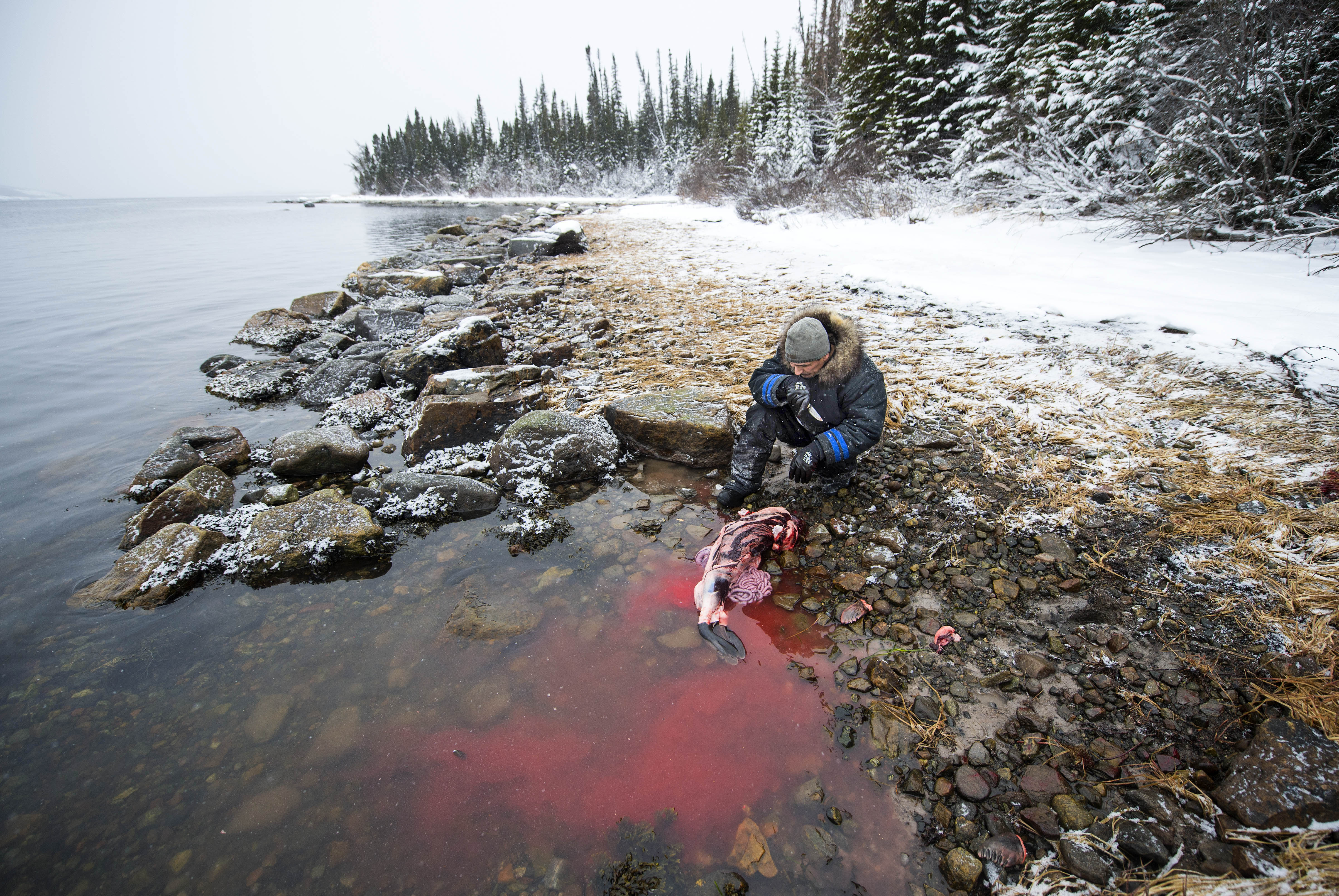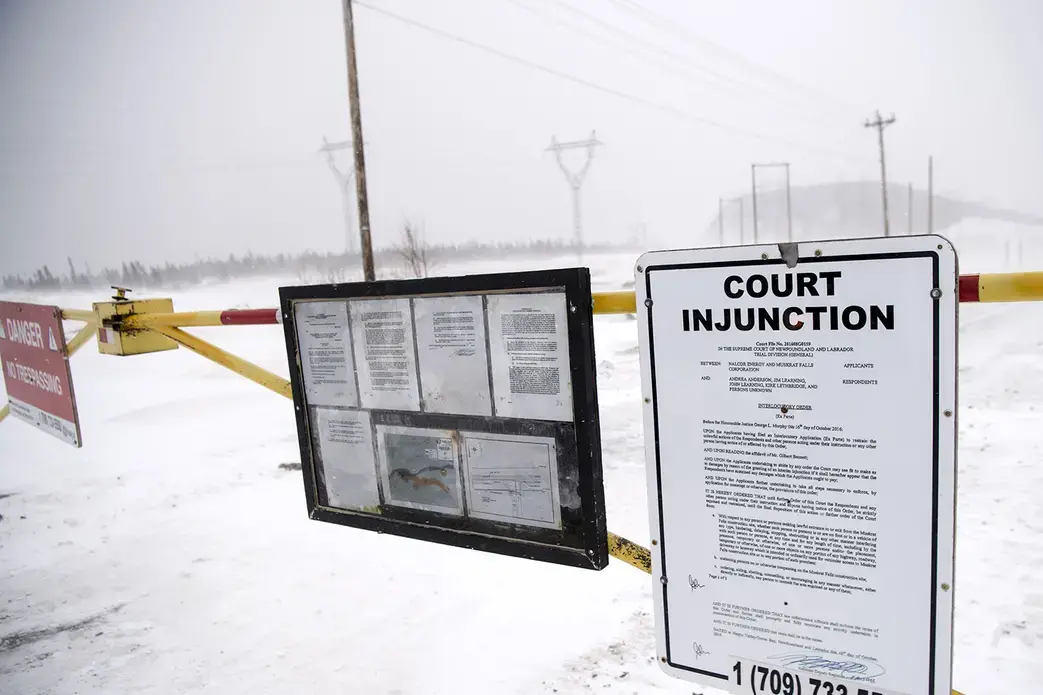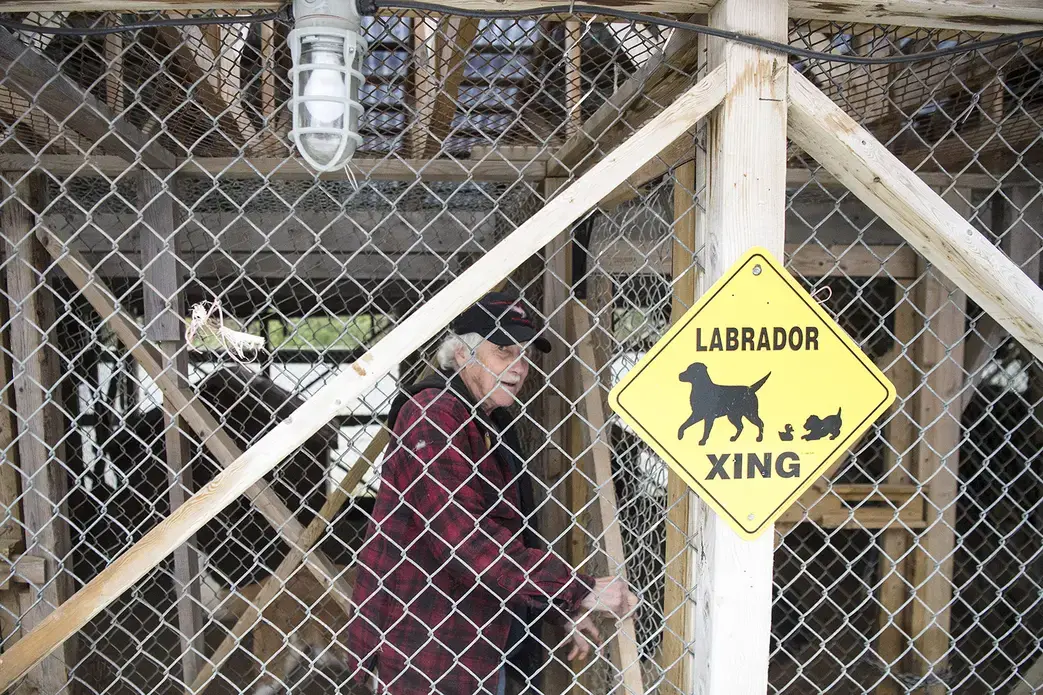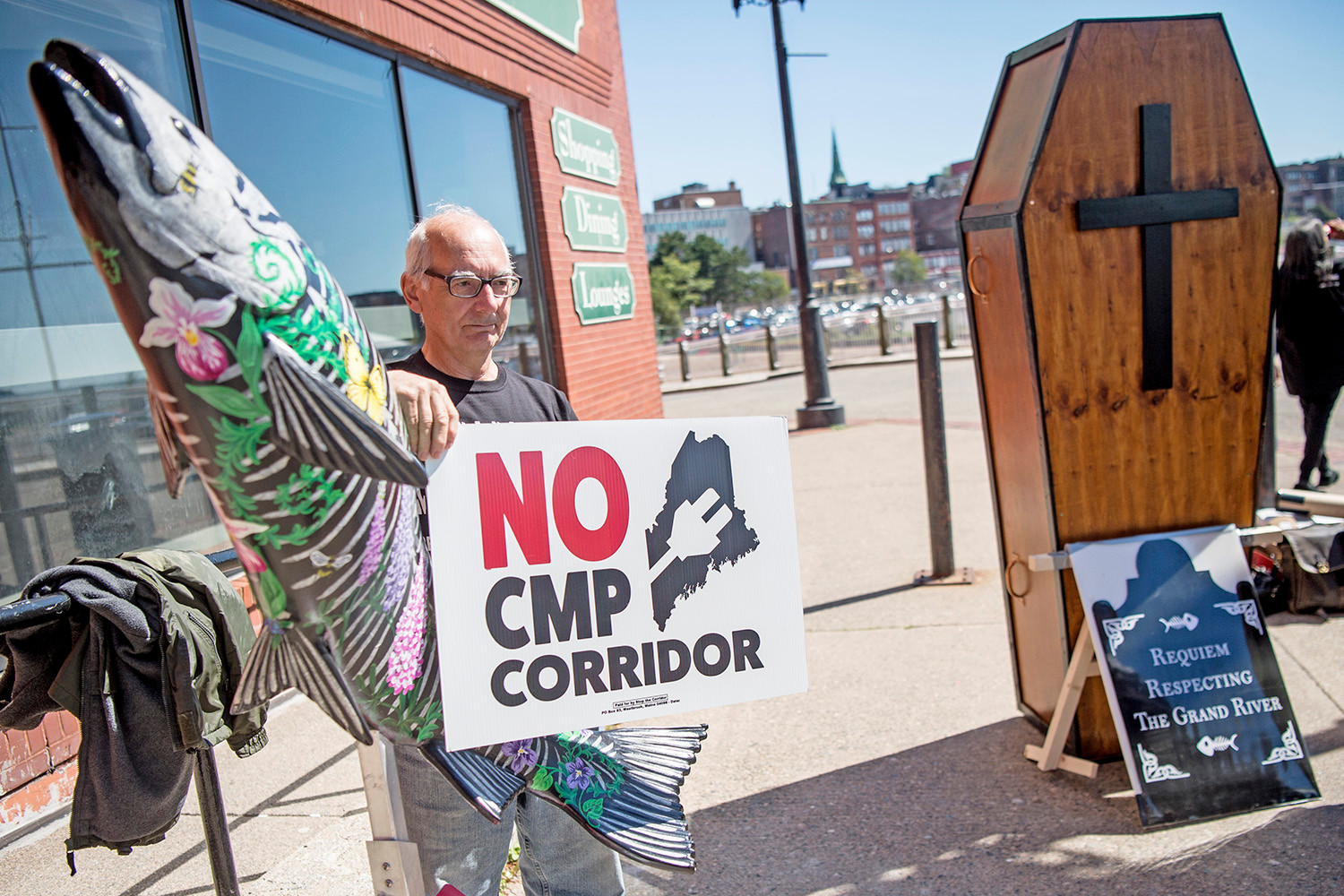
Happy Valley-Goose Bay, Newfoundland—Thursday is fish and brewis day.
That’s why most Thursdays found the NunatuKavut elders Jim Learning and Eldred Davis joining other seniors of aboriginal descent down at the Labrador Friendship Centre community cafeteria, where the sounds of lively conversation drowned out the twin creaking of joints and chairs.
“It’s a hard tack,” Learning said, describing the traditional Newfoundland dish of fish and brewis, one Thursday in November 2019. “Soaked but not boiled, and salt codfish and fatback pork. And potatoes. You mix those together.” At 81, the former woodcutter sat on a couch in the cabin he shares with his longtime partner, his thick, white hair flowing freely from his head.
Learning and Davis, a 72-year-old former utility company worker and lifelong bachelor, had nurtured a decadeslong friendship here in the Labrador region town of Happy Valley-Goose Bay. The community of 8,000 sprang up around a military base built during World War II, where the Churchill River drains Labrador’s largest watershed by flowing into Lake Melville.
Over two years ago, in July 2017, rather than chatting about the quirks of their respective woodstoves over hot plates of fish and brewis, the pair found themselves nearly 1,000 miles away, locked in a bleak cell in the basement of Her Majesty’s Penitentiary in St. John’s, Newfoundland. They were in the solitary confinement wing, but the day after Learning arrived, prison administrators surprised him by suggesting he share the cell’s single bunk bed and toilet with Davis. Soon, Davis was walking down the cellblock toward him in a comically oversized orange jumpsuit, white bushy eyebrows splitting the difference between his domed head and thick black eyeglass frames.
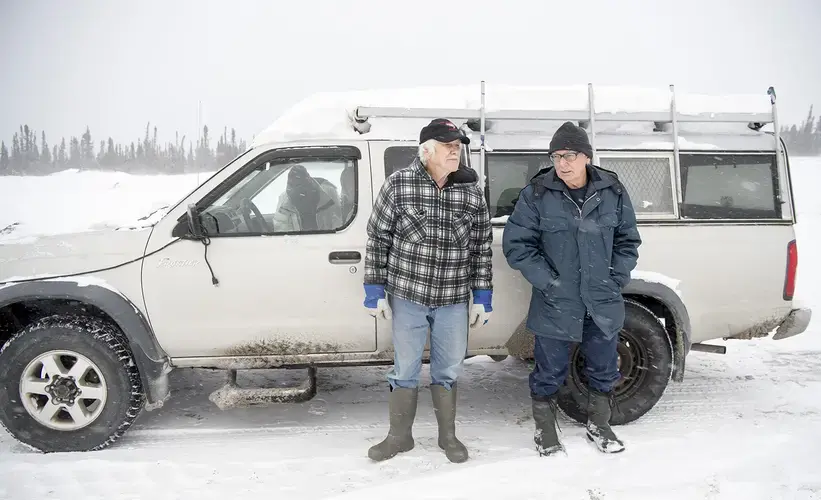
That Thursday, they later recalled, the usual thrice-daily ritual unfolded. The door to the cellblock opened to admit a prison guard, who pushed a tray with gray hamburgers and room-temperature french fries through a slot in their cell door. Davis and Learning, their faces covered stubble, exchanged a look but let the food sit.
“This building must be over a hundred years old,” Learning mused. “It’s a real rat’s nest.”
They hadn’t eaten for six days. Within an hour, the burgers were withdrawn, leaving the men alone to mull their crimes against the state.
By refusing to eat, they hoped to draw the world’s attention to the construction of Muskrat Falls, a hydropower plant costing 12.7 billion Canadian dollars (nearly $10 billion) that would eventually, despite their efforts, dam the Churchill River, less than 25 miles upstream of Happy Valley-Goose Bay.
Muskrat Falls is just one example of the Canadian government’s ongoing and massive investment in large-scale hydropower as a primary solution to climate change. In the coming years, Canada’s state-owned hydropower industry plans to export that idea, in the form of billions of dollars’ worth of energy, to U.S. markets that are facing intense political pressure to find renewable energy alternatives. But those plans face a real threat—in the form of people like Learning and Davis, otherwise law-abiding residents of indigenous descent who are desperate to quell Canada’s enthusiasm for large-scale hydropower.
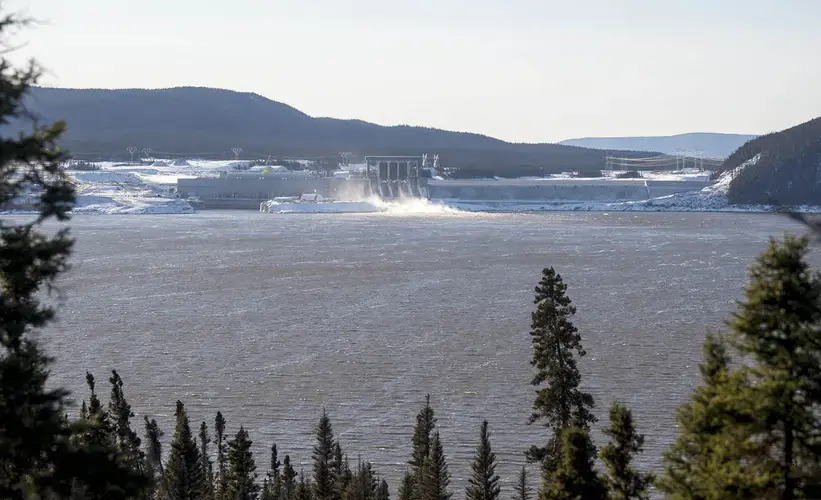
It took 70 years for Canada to grow its hydropower industry into the juggernaut it is now. Today, 500 energy-generating facilities shuttle electricity over a mammoth web of transmission lines and substations to power two-thirds of Canadian homes and businesses, making the country the third-largest producer of hydropower in the world behind China and Brazil. In the coming decades, the industry is expected to receive $125 billion in funding and create 1 million Canadian jobs.
But that rosy outlook depends on Canada selling power to the United States, where higher prices subsidize the enormous overhead associated with such projects. Every year, the United States spends about $3 billion to purchase around 10 percent of Canada’s electricity production; the power mostly flows to the Midwest, Northeast, and Pacific Northwest.
Companies like the Canadian energy firm Nalcor, which is developing the Muskrat Falls project, have reason to be optimistic that the U.S. demand for Canadian renewable energy will only grow. Although U.S. President Donald Trump pulled out of the United Nations-brokered 2016 Paris agreement on curbing greenhouse gas emissions, many states are setting their own strict targets, changing the energy landscape with blistering speed. Indeed, when then-Vermont Gov. Peter Shumlin signed the Vermont Comprehensive Energy Plan into law in 2016, the goal of achieving 90 percent renewable energy in his state by 2050 was the most ambitious in the nation. Over just the past four years, though, that goal has become relatively conservative.
For example, in 2019, Minnesota Gov. Tim Walz set a goal of 100 percent by 2050, while legislation in New York and Washington states set mandates of 100 percent renewable by 2045. In January, Rhode Island Gov. Gina Raimondo signed an executive order targeting 100 percent renewable by 2030.
As states consider how to follow through on those goals, large-scale hydropower is an attractive option. According to the International Hydropower Association, the world’s 1,292 gigawatts of installed capacity prevented 4 billion metric tons of greenhouse gases in 2018, equivalent to about 75 percent of the United States’ total emissions and a significant chunk of the 37.1 billion metric tons emitted globally, as calculated by the World Resources Institute.
In order to tap into the low-carbon bounty, Minnesota is building a $700 million Great Northern Transmission Line to pipe power from Manitoba; Maine is considering the New England Clean Energy Connect, a $950 million transmission line that cuts across its North Woods; Massachusetts signed a 20-year deal that could generate $10 billion for Canada’s Hydro-Québec; and New York City Mayor Bill de Blasio announced that he would aggressively pursue a major energy contract with Quebec.
But the rush to import hydropower relies on continued Canadian public support for an energy source that is touted as “clean and green.” And those in Happy Valley-Goose Bay are not on board. “Listen to what the seller has to say and then go in and talk to the people downstream of that particular dam,” Davis said in November. “I guess if the promoter is talking about green hydro, clean hydro, it’s basically nonexistent. For every hydro installation, there’s some damage somewhere, and large mega-dams with large reservoirs are the worst.”
In 2006, when then-Newfoundland and Labrador Premier Danny Williams announced that the province would pursue the Muskrat Falls project, many indigenous people in the region saw it as the latest step in a centuries-long pattern of colonization of the First Nations people.
When land is flooded to create a reservoir, a necessary step in building some hydroelectric facilities, naturally occurring mercury is released into the water column, where it is taken up by bacteria and transformed into methylmercury, a neurotoxin that can accumulate in the food chain and, in extreme cases, can cause serious damage to the neurological and nervous system of humans.
There is sharp debate over the extent to which the Muskrat Falls project will affect the fish, seals, and waterfowl eaten by residents of Happy Valley-Goose Bay and Rigolet, an Inuit community in the watershed. Nalcor cites studies predicting no human health impact whatsoever, while the Nunatsiavut Government, which governs the small Inuit community of Rigolet, cites research predicting that as many as two-thirds of Rigolet residents, most of whom rely on wild-caught food to survive, could regularly take in more than the dose considered safe by the U.S. Environmental Protection Agency.
The more dire predictions have stoked grave fear among the Inuit. “It’s an attack on our way of life,” Charlotte Wolfrey, the elected leader of Rigolet, told me this fall. “It’s cultural genocide.”
Wolfrey, Learning, and Davis have joined hundreds of other local residents in resisting the dam on Muskrat Falls. They began by speaking against it at public meetings, progressed to organizing community marches, and have lately turned to acts of civil disobedience. Residents went on hunger strikes and performed drum ceremonies. In 2016, they set up an encampment at the construction site, and they sporadically gummed up construction activity by physically blocking employee vehicles from entering and exiting.
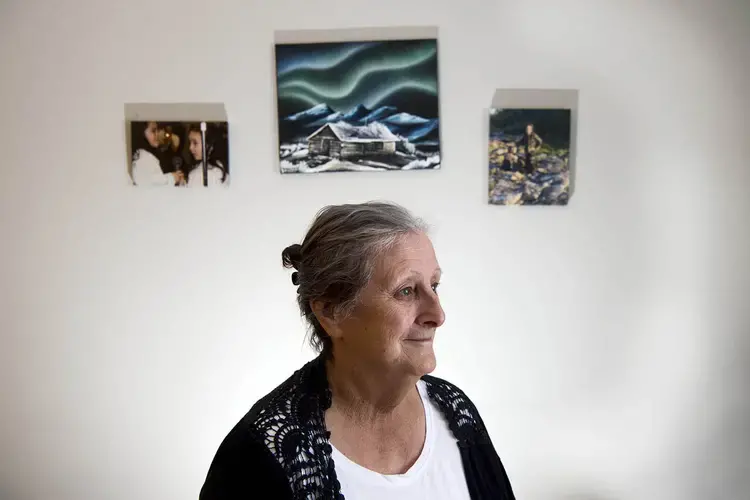
After a wave of arrests in 2016, during which dozens of people were jailed, a local judge issued an injunction prohibiting protesters from going within a kilometer, about half a mile, of Muskrat Falls. Learning, Davis, and a third elder, Marjorie Flowers, earned their prison terms in 2017 by refusing to sign an agreement to obey the injunction.
In prison, Learning and Davis relied on each other to get through long hours staring at the rusted iron bars and cracks in the concrete walls. Other residents of the solitary confinement wing had been convicted of crimes ranging from dealing drugs to murder.
Davis said that, other than sleeping on the concrete floor, which was aggravating an old back injury, he was doing well. But Learning seemed continually agitated by the injustice of it all.
He often harangued the guards about dehumanizing practices—he was reprimanded for refusing to open his mouth to allow a guard to ensure he had taken a pill, and on another occasion he summoned a jail administrator to argue against leaving the lights on all night.
“Don’t forget, in 1956 Canada signed on to the Geneva Convention,” he told the unimpressed administrator. “We banned torture in Canada. We can’t do it. You are doing it.”
Davis worried about his friend. “I told him he should eat, because he was fighting cancer”—Learning has been dealing with prostate cancer for 20 years—“and he needed nutrition,” Davis told me.
Learning, for his part, said he was energized, not agitated. “I was reveling in the crap,” he said.
Instead, he was more worried about Davis. During the first morning rounds, Davis would be so stiff that he could barely clamber to his feet to stand at attention. “It was hard for Eldred. He couldn’t sleep because of the lights,” Learning said. “He was really hurting.”
Canada’s sprawling efforts to build dams have resulted in relationships with indigenous groups that run the gamut from forced resettlement to mutually beneficial partnerships.
And there are signs of improvement, fueled in part by a landmark 2004 Canada Supreme Court case Haida Nation v. British Columbia, which found that governments are legally bound to consult with aboriginal groups before developing lands to which the groups have claims. Some of Canada’s biggest hydropower companies—Nalcor, Hydro-Québec, and BC Hydro, among others—have responded to concerns with a slate of measures designed to include indigenous communities into the planning process, with robust indigenous relations departments, community programs, and increased levels of consultation.
But the industry continues to draw criticism from human rights advocates like Amnesty International. And during a 2019 visit to Canada to assess its conformance with the U.N. Declaration on the Rights of Indigenous Peoples, Baskut Tuncak, the special rapporteur on human rights and hazardous substances and wastes, singled out Muskrat Falls as one of several areas of concern in a landscape in which marginalized indigenous people “find themselves on the wrong side of a toxic divide, subject to conditions that would not be acceptable elsewhere in Canada.”
Although Nalcor negotiated a deal that garnered support from Innu Nation, which had a recognized land claim to the site, in exchange for hundreds of millions of dollars in compensation, when it came to the Inuit and NunatuKavut, Tuncak said he’d heard notable concerns “regarding the absence of meaningful consultation afforded to two affected First Nations, the risk of methyl mercury releases contaminating traditional foods and impacting health,” among other concerns.
And future damming projects will invariably continue to butt up against marginalized communities. Ryan Calder, a Duke University researcher who has for years studied the impacts of dam-related toxins and the wild-caught food supplies of Canada’s First Nations communities, found in 2016 that 22 of 22 future dam proposals he’d identified, including another Nalcor project on the Churchill River, were located within 60 miles of indigenous communities.
The drive for renewable energy is bumping up against increasing levels of dissatisfaction with large-scale hydro among many environmental leaders and policymakers in the United States, too.

“The question is, should we put our time into that or put our time into developing renewable energy in Maine and New England, where we get more economic benefits?” Dylan Voorhees told me in October 2019. He is the climate and clean energy director for the Natural Resources Council of Maine, a state that serves as a critical physical link in Canadian exports. “Wind and solar have vastly lower impacts than the mega-dams in Canada, and there’s a whole host of social and cultural issues.”
While the Canadian federal government sees little difference between hydropower, wind, and solar, the U.S. Environmental Protection Agency does not consider large-scale hydro to be “green,” defined as energy that provides the “highest environmental benefit.” In addition to long-standing concerns about disruptions to fish migrations and the hydrologic cycle of wild rivers, recent research has also called attention to the considerable carbon emissions of dam reservoirs, mostly from carbon and methane that is released when flooded vegetation rots.
No wonder that, in January 2019, hundreds of environmental groups in the United States including Friends of the Earth and the Climate Justice Alliance signed onto a letter of support for the Green New Deal, a sweeping set of emissions-reduction measures that specifically excludes large-scale hydro from any definition of renewable energy.
Such opposition owes a debt to people like Learning and Davis, whose 2017 battle of wills with the Canadian justice system couldn’t last forever. After 10 days in solitary confinement, they were shackled and transported to a courtroom, where they stood before the judge, looking much more haggard than they had upon arrest. Well aware of the media attention that had followed their incarceration, the judge offered them another chance to sign the agreement to stay away from the Muskrat Falls site.
Davis said that, in some ways, he felt broken by his experience.
“I can’t go back to jail,” he told Learning. “The back problem is only going to get more and more, and I’m not getting any younger.”
After Davis signed, Learning and Flowers refused, essentially daring the judge to send them back to prison. But the judge crafted a compromise, in which they were held on house arrest for months.
As Learning recalled the story in his cabin in late 2019, he said that his brief time as a political prisoner in the twilight of his life would be a badge of honor. “I was on a cause. I could have been in there for a month,” he said. “I only regret that I didn’t get back in there.”
Then his eyes flickered to a clock on a side table.
“Oh no,” he said. “Did I miss it?” No, he realized. It was only Wednesday.
“It’s tomorrow,” he said, sinking back into his couch. “Tomorrow is fish and brewis day.”



